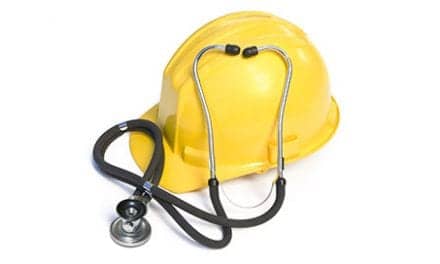
Success in growing an outpatient physical therapy practice is achievable within a variety of budgets. (Photo courtesy of TheNeuroStudio.com.)
By Taylor Galmarini, DPT
Neurological conditions are on the rise.
Currently, there are nearly one million people in the United States with multiple sclerosis. This year, nearly one million more will be diagnosed with Parkinson’s disease, and more than 800,000 will be experience a stroke. As staggering as those statistics are, they do not even include neurological conditions such as ALS, peripheral neuropathy, Alzheimer’s disease, and others.
As the number of people living with neurological conditions grows and more are diagnosed every day, physical therapists (PTs) who specialize in these conditions are rising in demand. Why? Because PTs have the capacity to be key figures in the lives of their patients. In my experience, sometimes a physical therapy session is the only movement a client or patient might experience all day.
As clinicians already know, physical therapy and movement are important for clients with neurological disease to decrease pain as well as maintain or increase mobility. However, there are many other ways to serve them inside and outside of the clinic. This article explores several ways to build success for a practice and empower PT patients to make real and lasting improvements in their lives.
Build a Referral Network
As a PT working with neurological and orthopedic populations, I have found that one secret of success is to create a network of like-minded practitioners. A great first step is to forge relationships with local neurologists, as they connect patients with neurological conditions to physical therapists and other professionals for holistic treatment. It is also incredibly valuable to build a roster of other specialist PTs, functional neurologists, exercise professionals, massage therapists, and healthcare practitioners to whom patients can be referred as needed. Neurological symptoms can be vast, with many factors that need to be addressed at the proper time and by the right practitioner. For example, I am comfortable completing visual and vestibular work with patients.
However, I will swiftly call on a specialist to consult to ensure we are not missing anything when complications arise. Treating within your scope and referring out as appropriate assures patients that you are fully dedicated to her or his success, builds their confidence in your skills, enhances the work you are doing, and increases their satisfaction with care. They, in turn, share that enthusiasm with other patients, and can further build your network of referrals.
Invest in Quality Equipment
With respect to having the best tools, each clinic has their wish list. If money were no object for facilities, some current rehab equipment to consider would include an AlterG Anti-Gravity Treadmill or other body weight support system, a pool, and a Galileo vibration plate. I am fortunate to work at a successful not-for-profit facility where I have access to many of these tools. When working in a smaller practice out of a Pilates studio or patient homes, many of these modalities might be unaffordable.
Luckily, I’ve found that success is achievable within a variety of budgets. And, there are several Pilates-based alternatives that can be incorporated into any clinic—large or small.
What is Pilates?
In the “Pilates for Neurological Conditions” course, Meghann Koppele, a Specialist in Exercise for Neurological Conditions, explained Pilates as “the selective stabilization of certain joints and the mobilization of others, with a great emphasis on the spine.” That intuitively makes sense to PTs because we know that without complementary mobility and stability of the spine, hips, and shoulders, ambulation won’t be successful. Years ago, I was drawn to Pilates because its exercises and principles can be used to address gait, balance, spasticity, and weakness, and for its ease of creating patient modifications in movement and on equipment.
The use and versatility of springs and pulleys for resistance have been game changing in rehab, especially when working with clients in wheelchairs, including those with hemiparesis and spasticity. While it has become a popular fitness trend, the heart of Pilates is actually rehabilitative exercise.
Fuse Ladder
The Fuse Ladder is a new fitness apparatus developed by Pilates and movement educator Mariska Breland. She was diagnosed with multiple sclerosis in 2002, and she designed this piece of equipment as a way to incorporate more standing, hanging, and reciprocal arm and leg movements into her Pilates practice. The beauty of the Fuse Ladder is that it offers much more than meets the eye and makes working out accessible to everybody, no matter what level of fitness or ability. I love how clients can bring their wheelchair directly up to it, grab the springs, and start moving. This would include a patient with a spinal cord injury being able to climb up the ladder, hang from the top bar, and do 10 pull-ups at a recent Pilates conference. The creativity and movement you choose to express with clients is nearly limitless. Another benefit of the ladder is that it retails for a price that aims to make it an affordable full-body machine in the rehab realm.
Cadillac
Another piece of equipment is the Cadillac, which resembles a canopy bed with springs. While it is much larger, it offers countless options to get weaker clients moving from all angles and positions. The slings and springs can decrease a patient’s body weight to assist movement, and it also offers options for stronger and more mobile clients. The Cadillac could be used to do a number of standing gait exercises, and it can also be used with an adjacent wheelchair depending on the space available at your clinic.
Reformer
This Pilates equipment is often mistaken for a leg press machine, but it’s one of the original pieces of equipment developed by Joseph Pilates. The Reformer is often smaller than the Cadillac, and the price varies depending on the model. It differs from the Cadillac because it has a moving base—which can be great for vestibular training and challenging patients’ movements while standing, sitting, or kneeling. Many Pilates companies make Reformers; I find that Balanced Body equipment tends to be a bit longer and wider to accommodate different body types well. You can purchase Reformers that are low to the ground as well as larger or taller models that can be better suited for clinical environments.
Encourage At-Home Practice & Education
In addition to using the great tools available at a clinic, PTs know how crucial home programs are for patients to make lasting change and carryover for work done in the clinic. Clients often appreciate the programs and complete exercises more if they know that PTs personalized that program for them. With full schedules and paperwork to complete, I notice that creating good programs can potentially cause undue strain on PTs as they seek the best format: paper, pictures, or videos.
I was introduced to The Neuro Studio (www.theneurostudio.com) when completing my Pilates for Neurological Conditions training. This platform, created by Meghann Koppele and Mariska Breland, offers quality workouts specifically designed to address the symptoms that neuro clients experience. They realized its usefulness to PTs as a way to save clinical time while also creating robust at-home programs for each patient. While I firmly believe that nothing can compare to a one-on-one session, the content presented inside this online studio comes in as a close second. One of the best features is that certain videos and sections can be recommended to patients based on clinical work. PTs can check to see if the client completed their assignments for accountability, and have a wide variety of content to choose from if a change is needed in the program.
Although you may worry that referring clients to an online resource might decrease clients’ visits or referral courses, it actually can increase the impact you make and therefore also increase referrals! Koppele and Breland offer not just workouts, but also tutorials on foot drop, balance, spasticity, and more. Clinically, I’ve found that knowledge empowers my patients to want to do more. They come in with more questions, and even get excited to do foot exercises. The Neuro Studio has recently added workshops for PTs and exercise professionals to review the fundamentals, and offers a glimpse into the methodology and programming behind the project. Clinicians may find that the Neuro Studio is an affordable option for them, and patients can cancel at any time.
Working with patients who have neurological conditions can be challenging, but with the right team, equipment, and home exercise programs, you can create more success and less stress for yourself and your patients. The best thing I did for my practice was to become fully certified in Pilates, incorporate use of Pilates equipment in rehab, and begin using the Neuro Studio. I hope some of these tools can help my colleagues build a strong practice, spend more quality time with their clients, and see greater success. PTP
Taylor Galmarini, DPT, is a board-certified physical therapist for the State of Georgia at Shepherd Center’s Multiple Sclerosis Rehabilitation and Wellness Program as well as the Acquired Brain Injury Rehabilitation department in Atlanta. She received a Bachelor of Science degree in Biomedical Sciences from Central Michigan University and earned a Doctor of Physical Therapy degree from the University of Miami. She is a member of the American Physical Therapy Association as well as a Pilates Method Alliance certified instructor. Galmarini enjoys combining her passions for Physical Therapy and Pilates to create a holistic approach to neuromuscular and musculoskeletal rehabilitation as well as community fitness. For more information, contact [email protected].





